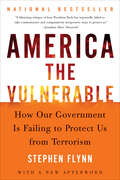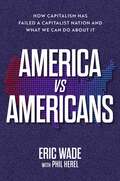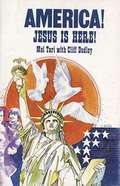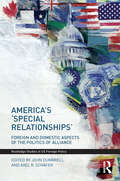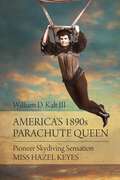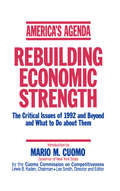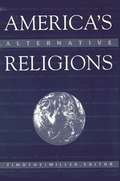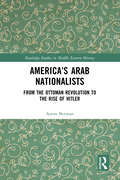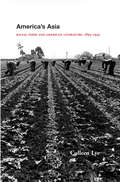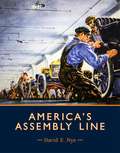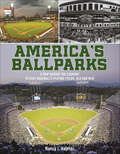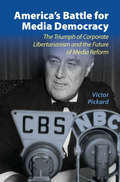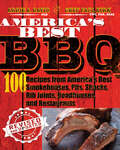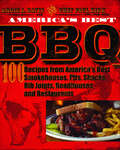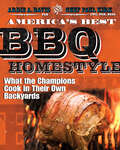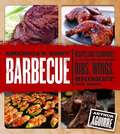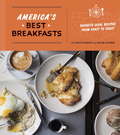- Table View
- List View
America the Vulnerable: How Our Government is Failing to Protect Us Against Terrorism
by Stephen FlynnIn this powerful and urgently needed call to action, national security expert Stephen Flynn offers a startling portrait of the radical shortcomings in America's plan for homeland security. He describes a frightening scenario of what the next major terrorist attack might look like -- revealing the tragic loss of life and economic havoc it would leave in its wake, as well as the seismic political consequences it would have in Washington. Flynn also shows us how to prepare for such a disaster, outlining a bold yet practical plan for achieving security in a way that is safe and smart, effective and manageable.In this new world of heightened risk and fear, America the Vulnerable delivers a timely, forceful message that cannot be ignored.
America vs. Americans: How Capitalism Has Failed a Capitalist Nation and What We Can Do About It
by Eric WadeIn America vs. Americans, Eric Wade presents American Laborism, a revolutionary new economic system, where the greatest commodity isn&’t cash, it&’s work.Capitalism is broken. Despite its successes, capitalism gives us the largest wealth gap in American history, failing Social Security, a weak currency, and a looming threat of AI destroying our workforce. We need a new system—one built around people rather than capital. A system that values each person&’s unique contribution, ingenuity, and hard work—their labor. A system in which the greatest commodity isn&’t cash; it&’s work. And a system in which Americans at every level of society and government are working together. We need American Laborism, a revolutionary new system that presents a workable, low-tax form of capitalism for those who want it—and a dignified, healthy, happy, and fulfilled life for everyone else. Under American Laborism, if you&’re happy with the current capitalist system, great! Carry on—but you&’ll get to do it with a smaller government, fewer regulations, better-educated employees, and lower taxes. And if capitalism hasn&’t worked out as well for you, you get access to unlimited free education and training, guaranteed housing and food, and a sound asset-backed currency. Everybody wins! American Laborism isn&’t just a replacement for capitalism. It&’s an upgrade. Every American has the right to live a life of dignity, to contribute, and to ensure that their basic needs are respected by their society. American Laborism can improve the lives of every American by bringing the least among us up . . . without bringing anyone else down. It&’s time to heal our nation. It&’s time for American Laborism.
America! Jesus Is Here!
by Mel Tari Cliff DudleyMel Tari because of the daring of Like a Mighty Wind is in suspect by many people. There are those who praise him and those who curse the day he was born. Now Mel brings you messages from God on the simplicity of the Word, Christ's return, spiritual growth, and the command for the baptism of love.Jesus is alive and doing great and mighty things among His people - listen to the cry of Mel Tari, America, Jesus is Here!
America'S Energy Future: Technology and Transformation - Summary Edition
by National Academy of Science National Academy of Enegineering National Research Council of the National AcademiesEnergy touches our lives in countless ways and its costs are felt when we fill up at the gas pump, pay our home heating bills, and keep businesses both large and small running. There are long-term costs as well: to the environment, as natural resources are depleted and pollution contributes to global climate change, and to national security and independence, as many of the world's current energy sources are increasingly concentrated in geopolitically unstable regions. The country's challenge is to develop an energy portfolio that addresses these concerns while still providing sufficient, affordable energy reserves for the nation. The United States has enormous resources to put behind solutions to this energy challenge; the dilemma is to identify which solutions are the right ones. Before deciding which energy technologies to develop, and on what timeline, we need to understand them better. The summary edition of America's Energy Future summarizes the full analyses of the potential of a wide range of technologies for generation, distribution, and conservation of energy found in the complete edition of America's Energy Future. This summary edition also succinctly considers technologies to increase energy efficiency, coal-fired power generation, nuclear power, renewable energy, oil and natural gas, and alternative transportation fuels. It assesses the associated impacts and projected costs of implementing each technology and categorizes them into three time frames for implementation.
America's 'Special Relationships': Foreign and Domestic Aspects of the Politics of Alliance (Routledge Studies in US Foreign Policy)
by Axel R. Schäfer John DumbrellThis unique volume offers an original collection of essays on the theme of America’s ‘special relationships’. It interrogates in an original and provocative manner the distinctive character of America’s interactions with an array of allies and clients, both international and domestic. The essays vary in their focus; some are primarily historical, some are more contemporary. All consider the quality of ‘specialness’ in the context of America’s relationship with particular countries, including the United Kingdom, Canada, Australia, New Zealand, Holland, Russia, Iran and Israel. The collection also concerns the relationship between the American state and key ‘special’ foreign policy interests, notably ethnic lobbies and religious groups. Bringing together a wide range of experts, this timely collection provides a valuable addition to the debates surrounding US foreign policy, and will be of great interest to students and scholars of American politics, American history and international relations.
America's 1890s Parachute Queen: Pioneer Skydiving Sensation Miss Hazel Keyes
by William III KaltDeath-defying skydiver Miss Hazel Keyes thrills thousands as she leaps from her balloon with her monkey, Miss Jennie Yan Yan. Sail through the heavens with this robust, spunky woman as she earns nationwide fame for more than a decade. Miss Hazel’s life af
America's Agenda: Rebuilding Economic Strength
by Mario M. Cuomo The Cuomo Commission on CompetitivenessCuomo's Commission on Competitiveness argues that America must reform its economic and social policies and institutions to reverse the weakening of its industrial leadership, the erosion of living standards and escalating social problems. Topics include public investment, urban poverty, health care, the environment, fiscal policy and international strategies.
America's Allies and the Decline of US Hegemony (Routledge Studies in Foreign Policy Analysis)
by Jonathan Paquin Justin MassieHow do America’s democratic allies perceive and respond to a relative decline in US power and influence and the simultaneous rise of China? Using the case-studies of Europe, the UK, Australia, Canada, Japan and South East Asian countries, this book offers a broad assessment of the perceptions of threat and the strategies used by these allies to cope with the relative decline of America’s hegemonic power, the rise of China and the transforming world order. In answering these central questions, contributors focus on two complementary analytical approaches. The first examines the perceptions of systemic changes by America’s allies: how are US allies framing this issue and what kind of political discourse is emerging with regards to it? The second approach focuses on the concrete foreign policy and defence strategies put forward by these allies. The book explores the extent to which US allies are willing to support US hegemony and considers the democratic allies’ understanding of the international structure, their relations to the United States, and their own aspirations in this changing world order. This book will be of interest to general readers as well as scholars and students of US foreign policy, foreign policy analysis and International Relations.
America's Alligator: A Popular History of Our Most Celebrated Reptile
by Doug AldersonPeople have long been fascinated by the American alligator. Ever since humans arrived on the continent more than 15,000 years ago, the American alligator has been both feared and revered, celebrated and scorned, and often hunted for food and hide.Once tourism began to take hold in the South as a real industry, especially in Florida, the alligator took on iconic and even mythical status. &“One of the most picturesque features of Florida has always been that uncouth and fierce-looking reptile called the alligator,&” wrote Nevin O. Winter in 1918. &“Everybody who comes down here to the peninsula has an ambition to see one in the wild.&” Seminole Indians wrestled alligators for show. Alligator souvenirs and mascots often took what people feared—a sharp-toothed predator—and made it into something cute and cuddly. Alligator-themed songs were recorded and released, including &“See You Later Alligator&” by Bill Haley and His Comets. Hollywood into created alligator-themed movies such as Alligator People. Alligators were also reportedly kept in the White House under two presidencies. And perhaps the most unusual alligator story was one that helped to nab Ma Barker and her son Fred when they were hiding out along Florida&’s Lake Weir.America&’s Alligator examines the colorful and sometimes conflicted relationship our species has had with Alligator mississippiensis. Doug Alderson explores the country&’s rich alligator mythology and how it inspired various forms of art, stories, photography, tourism and even humor.
America's Alternative Religions (SUNY Series in Religious Studies)
by Timothy MillerThis is a single-volume source of reliable information on the most important alternative religions, covering for each such essentials as history, theology, impact on the culture, and current status. The chapters of the book were written by experts who study the movements they have written about.
America's Arab Nationalists: From the Ottoman Revolution to the Rise of Hitler (Routledge Studies in Middle Eastern History)
by Aaron BermanAmerica’s Arab Nationalists focuses in on the relationship between Arab nationalists and Americans in the struggle for independence in an era when idealistic Americans could see the Arab nationalist struggle as an expression of their own values. In the first three decades of the twentieth century (from the 1908 Ottoman revolution to the rise of Hitler), important and influential Americans, including members of the small Arab-American community, intellectually, politically and financially participated in the construction of Arab nationalism. This book tells the story of a diverse group of people whose contributions are largely unknown to the American public. The role Americans played in the development of Arab nationalism has been largely unexplored by historians, making this an important and original contribution to scholarship. This volume is of great interest to students and academics in the field, though the narrative style is accessible to anoyone interested in Arab nationalism, the conflict between Zionists and Palestinians, and the United States’ relationship with the Arab world.
America's Asia: Racial Form and American Literature, 1893-1945
by Colleen LyeWhat explains the perception of Asians both as economic exemplars and as threats? America's Asia explores a discursive tradition that affiliates the East with modern efficiency, in contrast to more familiar primitivist forms of Orientalism. Colleen Lye traces the American stereotype of Asians as a "model minority" or a "yellow peril"--two aspects of what she calls "Asiatic racial form"-- to emergent responses to globalization beginning in California in the late nineteenth century, when industrialization proceeded in tandem with the nation's neocolonial expansion beyond its continental frontier. From Progressive efforts to regulate corporate monopoly to New Deal contentions with the crisis of the Great Depression, a particular racial mode of social redress explains why turn-of-the-century radicals and reformers united around Asian exclusion and why Japanese American internment during World War II was a liberal initiative. In Lye's reconstructed archive of Asian American racialization, literary naturalism and its conventions of representing capitalist abstraction provide key historiographical evidence. Arguing for the profound influence of literature on policymaking, America's Asia examines the relationship between Jack London and leading Progressive George Kennan on U.S.-Japan relations, Frank Norris and AFL leader Samuel Gompers on cheap immigrant labor, Pearl S. Buck and journalist Edgar Snow on the Popular Front in China, and John Steinbeck and left intellectual Carey McWilliams on Japanese American internment. Lye's materialist approach to the construction of race succeeds in locating racialization as part of a wider ideological pattern and in distinguishing between its different, and sometimes opposing, historical effects.
America's Assembly Line
by David E. NyeThe assembly line was invented in 1913 and has been in continuous operation eversince. It is the most familiar form of mass production. Both praised as a boon to workers andcondemned for exploiting them, it has been celebrated and satirized. (We can still picture Chaplin'slittle tramp trying to keep up with a factory conveyor belt. ) In America's AssemblyLine, David Nye examines the industrial innovation that made the United States productiveand wealthy in the twentieth century. The assembly line -- developed at the FordMotor Company in 1913 for the mass production of Model Ts -- first created and then served anexpanding mass market. It inspired fiction, paintings, photographs, comedy, cafeteria layouts, andcookie-cutter suburban housing. It also transformed industrial labor and provoked strikes and uniondrives. During World War II and the Cold War, it was often seen as a bastion of liberty andcapitalism. By 1980, Japan had reinvented the assembly line as a system of "leanmanufacturing"; American industry reluctantly adopted this new approach. Nye describes thisevolution and the new global landscape of increasingly automated factories, with fewer industrialjobs in America and questionable working conditions in developing countries. A century after Ford'spioneering innovation, the assembly line continues to evolve toward more sustainablemanufacturing.
America's Assembly Line
by David E. NyeFrom the Model T to today's "lean manufacturing": the assembly line as crucial, yet controversial, agent of social and economic transformation.The mechanized assembly line was invented in 1913 and has been in continuous operation ever since. It is the most familiar form of mass production. Both praised as a boon to workers and condemned for exploiting them, it has been celebrated and satirized. (We can still picture Chaplin's little tramp trying to keep up with a factory conveyor belt.) In America's Assembly Line, David Nye examines the industrial innovation that made the United States productive and wealthy in the twentieth century.The assembly line—developed at the Ford Motor Company in 1913 for the mass production of Model Ts—first created and then served an expanding mass market. It also transformed industrial labor. By 1980, Japan had reinvented the assembly line as a system of “lean manufacturing”; American industry reluctantly adopted the new approach. Nye describes this evolution and the new global landscape of increasingly automated factories, with fewer industrial jobs in America and questionable working conditions in developing countries. A century after Ford's pioneering innovation, the assembly line continues to evolve toward more sustainable manufacturing.
America's Ballparks: A Trip Across the Country to Visit Baseball’s Playing Fields, Old and New
by Nancy J. HajeskiNothing stirs the soul of a baseball fan like the crack of a bat against a ball . . . or the sight of a fielder leaping high into the air to snatch that ball out of play. What would these fans be without their favorite sport, and what would baseball be without those high-tiered, impossibly beautiful temples to the sport called ballparks? North Americans have treasured some wonderful venues from bygone eras, but sadly lost so many as well. Within the pages of this book readers can revel in the new builds—the retro-modern fields inspired by Baltimore&’s Camden Yards, while looking fondly back at the older, more traditional ballparks often referred to as Jewel Boxes. In America&’s Ballparks all 30 Major League Baseball stadiums are covered in detail, along with a brief history of their teams and background on any previous ballparks in which they played. Special features throughout the book include: • the design evolution and anatomy of ballparks • the home fields of the Negro Leagues • the top venues of Japan&’s Nippon Professional Baseball. • There is even a section that examines the long partnership between baseball and corporate branding. • Each ballpark entry provides cumulative team stats, as well as lists of stadium firsts and club achievements.
America's Bank
by Roger LowensteinA tour de force of historical reportage, America's Bank illuminates the tumultuous era and remarkable personalities that spurred the unlikely birth of America's modern central bank, the Federal Reserve. Today, the Fed is the bedrock of the financial landscape, yet the fight to create it was so protracted and divisive that it seems a small miracle that it was ever established. For nearly a century, America, alone among developed nations, refused to consider any central or organizing agency in its financial system. Americans' mistrust of big government and of big banks--a legacy of the country's Jeffersonian, small-government traditions--was so widespread that modernizing reform was deemed impossible. Each bank was left to stand on its own, with no central reserve or lender of last resort. The real-world consequences of this chaotic and provincial system were frequent financial panics, bank runs, money shortages, and depressions. By the first decade of the twentieth century, it had become plain that the outmoded banking system was ill equipped to finance America's burgeoning industry. But political will for reform was lacking. It took an economic meltdown, a high-level tour of Europe, and--improbably--a conspiratorial effort by vilified captains of Wall Street to overcome popular resistance. Finally, in 1913, Congress conceived a federalist and quintessentially American solution to the conflict that had divided bankers, farmers, populists, and ordinary Americans, and enacted the landmark Federal Reserve Act.Roger Lowenstein--acclaimed financial journalist and bestselling author of When Genius Failed and The End of Wall Street--tells the drama-laden story of how America created the Federal Reserve, thereby taking its first steps onto the world stage as a global financial power. America's Bank showcases Lowenstein at his very finest: illuminating complex financial and political issues with striking clarity, infusing the debates of our past with all the gripping immediacy of today, and painting unforgettable portraits of Gilded Age bankers, presidents, and politicians.Lowenstein focuses on the four men at the heart of the struggle to create the Federal Reserve. These were Paul Warburg, a refined, German-born financier, recently relocated to New York, who was horrified by the primitive condition of America's finances; Rhode Island's Nelson W. Aldrich, the reigning power broker in the U.S. Senate and an archetypal Gilded Age legislator; Carter Glass, the ambitious, if then little-known, Virginia congressman who chaired the House Banking Committee at a crucial moment of political transition; and President Woodrow Wilson, the academician-turned-progressive-politician who forced Glass to reconcile his deep-seated differences with bankers and accept the principle (anathema to southern Democrats) of federal control. Weaving together a raucous era in American politics with a storied financial crisis and intrigue at the highest levels of Washington and Wall Street, Lowenstein brings the beginnings of one of the country's most crucial institutions to vivid and unforgettable life. Readers of this gripping historical narrative will wonder whether they're reading about one hundred years ago or the still-seething conflicts that mark our discussions of banking and politics today. From the Hardcover edition.
America's Bank: The Epic Struggle to Create the Federal Reserve
by Roger LowensteinA tour de force of historical reportage, America's Bank illuminates the tumultuous era and remarkable personalities that spurred the unlikely birth of America's modern central bank, the Federal Reserve. Today, the Fed is the bedrock of the financial landscape, yet the fight to create it was so protracted and divisive that it seems a small miracle that it was ever established. For nearly a century, America, alone among developed nations, refused to consider any central or organizing agency in its financial system. Americans' mistrust of big government and of big banks--a legacy of the country's Jeffersonian, small-government traditions--was so widespread that modernizing reform was deemed impossible. Each bank was left to stand on its own, with no central reserve or lender of last resort. The real-world consequences of this chaotic and provincial system were frequent financial panics, bank runs, money shortages, and depressions. By the first decade of the twentieth century, it had become plain that the outmoded banking system was ill equipped to finance America's burgeoning industry. But political will for reform was lacking. It took an economic meltdown, a high-level tour of Europe, and--improbably--a conspiratorial effort by vilified captains of Wall Street to overcome popular resistance. Finally, in 1913, Congress conceived a federalist and quintessentially American solution to the conflict that had divided bankers, farmers, populists, and ordinary Americans, and enacted the landmark Federal Reserve Act.Roger Lowenstein--acclaimed financial journalist and bestselling author of When Genius Failed and The End of Wall Street--tells the drama-laden story of how America created the Federal Reserve, thereby taking its first steps onto the world stage as a global financial power. America's Bank showcases Lowenstein at his very finest: illuminating complex financial and political issues with striking clarity, infusing the debates of our past with all the gripping immediacy of today, and painting unforgettable portraits of Gilded Age bankers, presidents, and politicians.Lowenstein focuses on the four men at the heart of the struggle to create the Federal Reserve. These were Paul Warburg, a refined, German-born financier, recently relocated to New York, who was horrified by the primitive condition of America's finances; Rhode Island's Nelson W. Aldrich, the reigning power broker in the U.S. Senate and an archetypal Gilded Age legislator; Carter Glass, the ambitious, if then little-known, Virginia congressman who chaired the House Banking Committee at a crucial moment of political transition; and President Woodrow Wilson, the academician-turned-progressive-politician who forced Glass to reconcile his deep-seated differences with bankers and accept the principle (anathema to southern Democrats) of federal control. Weaving together a raucous era in American politics with a storied financial crisis and intrigue at the highest levels of Washington and Wall Street, Lowenstein brings the beginnings of one of the country's most crucial institutions to vivid and unforgettable life. Readers of this gripping historical narrative will wonder whether they're reading about one hundred years ago or the still-seething conflicts that mark our discussions of banking and politics today. From the Hardcover edition.
America's Battle for Media Democracy
by Victor PickardHow did the American media system become what it is today? Why do American media have so few public-interest regulations compared with other democratic nations? How did the system become dominated by a few corporations, and why are structural problems like market failures routinely avoided in media-policy discourse? By tracing the answers to many of these questions back to media-policy battles in the 1940s, this book explains how this happened and why it matters today. Drawing from extensive archival research, the book uncovers the American media system's historical roots and normative foundations. It charts the rise and fall of a forgotten media-reform movement to recover alternatives and paths not taken. As much about the present and future as it is about the past, the book proposes policies for remaking media based on democratic values for the digital age.
America's Best BBQ: 100 Recipes from America's Best Smokehouses, Pits, Shacks, Rib Joints, Roadhouses, and Restaurants
by Ardie A. Davis&“Covering styles from Texas to Memphis, the Deep South, Kansas City, Oklahoma, and beyond, this book is your go-to for barbecue of all stripes.&” —Taste of the South, &“Best Barbecue Books for Dad&” Only Ardie A. Davis and Paul Kirk, the renowned sources on barbecue, can earn the trust and the recipes from the nation&’s barbecue legends—from the tried-and-true locales to even a few joints outside of the traditional barbecue belt. Tasty sides include tips, tricks, techniques, fun memorabilia, 365 full-color photos of the joints and their food, and firsthand recollections of tales from the pits culled from over a century of combined barbecue experience. There is even a section of barbecue basics for those who are just getting started. With more than 100 recipes for mouthwatering starters (Fried Cheese Stick Grits, BBQ Egg Rolls), moist and flavorful meats, both classic and inventive side dishes (BBQ Cornbread, Grilled Potato Salad), a slew of sauces and rubs, and even some decadent desserts (Fried Pies, Root Beer Cake, Pig Candy), this book should come with its own wet-nap.&“As much a cookbook as it is a travel guide for the country&’s best rib joints, smokehouses and barbecue shacks. Davis and Kirk are the deans of American barbecue; this is their classroom textbook.&” —The Columbus Dispatch&“[Takes] readers on a journey across the country to try a variety of American barbecue dishes . . . this version includes a few more Texas joints, and the personal Top ten lists of each author shows how much quality time they spent in the Lone Star State.&” —Texas Monthly
America's Best BBQ: 100 Recipes from America's Best Smokehouses, Pits, Shacks, Rib Joints, Roadhouses, and Restaurants
by Ardie DavisOnly Ardie and Paul, the go-to sources on barbecue, can earn the trust—and the secret recipes—from some of the nation's barbecue legends.Tasty sides include tips, tricks, techniques, fun memorabilia, full-color photos, and firsthand recollections of tales from the pits culled from over a century of combined barbecue experience.With more than 100 recipes for mouthwatering starters, moist and flavorful meats, classic side dishes, sauces and rubs, and decadent desserts, this book should come with its own wet-nap.* Whether it's spicy or sweet, Texas or Memphis, this is the best collection of American barbecue recipes.* Ardie's BBQ alter ego, Remus Powers, PhB, has earned profiles in many barbecue books, tons of magazines, and more than a few national newspapers. He's graced the Food Network and PBS, appearing in various documentaries on 'cue and great American cuisine.* Paul has appeared on The Today Show, Discovery Channel, CBS This Morning, Talk Soup, and Anthony Bourdain's A Cook's Tour: In Search of the Perfect Meal. He was also featured in AARP's Modern Maturity Magazine, Saveur, and The Calgary Herald, and he has written articles for Food and Wine, Fine Cooking, and Chili Pepper magazine.
America's Best BBQ—Homestyle: What the Champions Cook in Their Own Backyards
by Ardie A. Davis Chef Paul KirkTake your backyard cookouts to a new level. “Davis and Kirk explore the world of competition barbecue and share tips and recipes straight from the champs.” —The Edwardsville IntelligencerIt began with one simple question: What do championship barbecuers love to cook for themselves, when there are no rules but the simple laws of physics and basic chemistry? With more than thirty years of barbecue contest experience apiece, Ardie A. Davis, professional barbecue judge and barbecue historian extraordinaire, and KC Baron of Barbeque Paul Kirk, with a slew of awards under his belt—including seven world championships—were just the guys to ask it.America’s Best BBQ—Homestyle collects the best backyard cookout recipes from people who have gone pro. Some of the recipes are former competition winners that have earned a constant place at the family table. Others are foods that teams like to make (and share) while they tend their fires on contest day. A few are old family recipes passed down for generations. And some are even the result of ingenious experiments in the kitchen and at the grill. Most are easy. All are sure to win the hearts of friends and neighbors at your next family cookout.Also included are tips and advice on everything from meal prep to gadgets, some basics to get you started, a few tall tales from the pits, and tons of photos of the dishes and the pitmasters who make them. This is the only book you need to become “the envy of the subdivision, the pride of the campground, and the host with the most at the next tailgate party” (The Self Taught Cook).
America's Best BBQ—Homestyle: What the Champions Cook in Their Own Backyards
by Ardie A. Davis Chef Paul KirkTake your backyard cookouts to a new level. “Davis and Kirk explore the world of competition barbecue and share tips and recipes straight from the champs.” —The Edwardsville IntelligencerIt began with one simple question: What do championship barbecuers love to cook for themselves, when there are no rules but the simple laws of physics and basic chemistry? With more than thirty years of barbecue contest experience apiece, Ardie A. Davis, professional barbecue judge and barbecue historian extraordinaire, and KC Baron of Barbeque Paul Kirk, with a slew of awards under his belt—including seven world championships—were just the guys to ask it.America’s Best BBQ—Homestyle collects the best backyard cookout recipes from people who have gone pro. Some of the recipes are former competition winners that have earned a constant place at the family table. Others are foods that teams like to make (and share) while they tend their fires on contest day. A few are old family recipes passed down for generations. And some are even the result of ingenious experiments in the kitchen and at the grill. Most are easy. All are sure to win the hearts of friends and neighbors at your next family cookout.Also included are tips and advice on everything from meal prep to gadgets, some basics to get you started, a few tall tales from the pits, and tons of photos of the dishes and the pitmasters who make them. This is the only book you need to become “the envy of the subdivision, the pride of the campground, and the host with the most at the next tailgate party” (The Self Taught Cook).
America's Best Barbecue: Recipes and Techniques for Prize-Winning Ribs, Wings, Brisket, and More
by Arthur AguirreBarbecue contests are serious business. Major competitions and festivals now take place in twenty-eight states, and there are twenty BBQ associations and societies across the country committed to encouraging the art of smoking and grilling meat. While thousands of chefs compete for the best ribs or brisket, low-key backyard BBQ competitions are springing up all over the country, offering amateur smokers the chance to become the neighborhood BBQ king or queen.Arthur Aguirre's BBQ team, Major League Grilling, has won nearly twenty awards in his first two years of BBQ competition, including Grand Champion at the Soybean Festival in Mexico, Missouri. In this book he compiles his prize-winning recipes with those of competitors across the country to offer the best rib, pit-fired poultry, brisket, and pulled pork recipes. From applewood smoked turkey to Napa Valley ribs to smoked meatloaf in a bacon weave, this book has something for every BBQ enthusiast. In addition, readers will find tips for concocting the perfect rubs, glazes, and sauces.
America's Best Bass Fishing: The Fifty Best Places to Catch Bass
by Steven D. PriceLargemouth, smallmouth or stripers--bass of all varieties are the number one sport fish across the country, and in America's Best Bass Fishing veteran angler and outdoor writer Steve Price points the way to the very best places to catch them.
America's Best Breakfasts: Favorite Local Recipes from Coast to Coast
by Lee Brian Schrager Adeena SussmanRise and dine! If there's one meal of the day to get passionate about--no matter where you're from in this great land--it's breakfast with all the fixings. Featuring down-home diners, iconic establishments, and the newest local hot spots, America's Best Breakfasts is a celebration of two of this nation's honored traditions: hitting the open road and enjoying an endless variety of breakfasts. Even without a road trip, you can re-create favorites that will satisfy any time of day: Shrimp and Grits, Hominy Grill, Charleston Croque Monsieur Sandwiches, Tartine, San Francisco Kimchi Pancakes, Sunshine Tavern, Portland Filipino Steak with Garlic Fried Rice, Uncle Mike's, Chicago Cannoli French Toast, Café Lift, Philadelphia Brioche Cinnamon Buns, Honey Bee, Oxford Morning Glory Muffins, Panther Coffee, Miami
